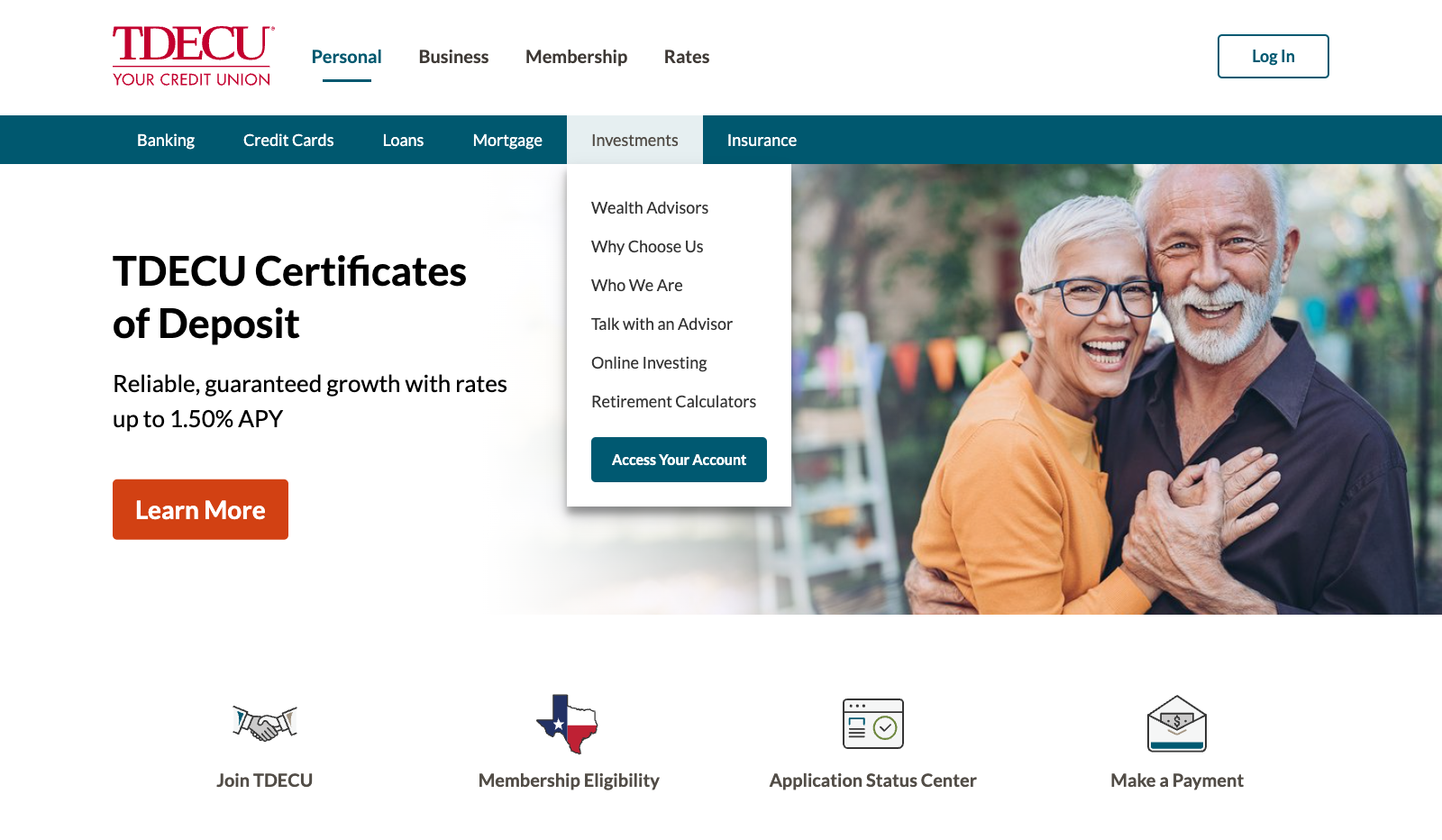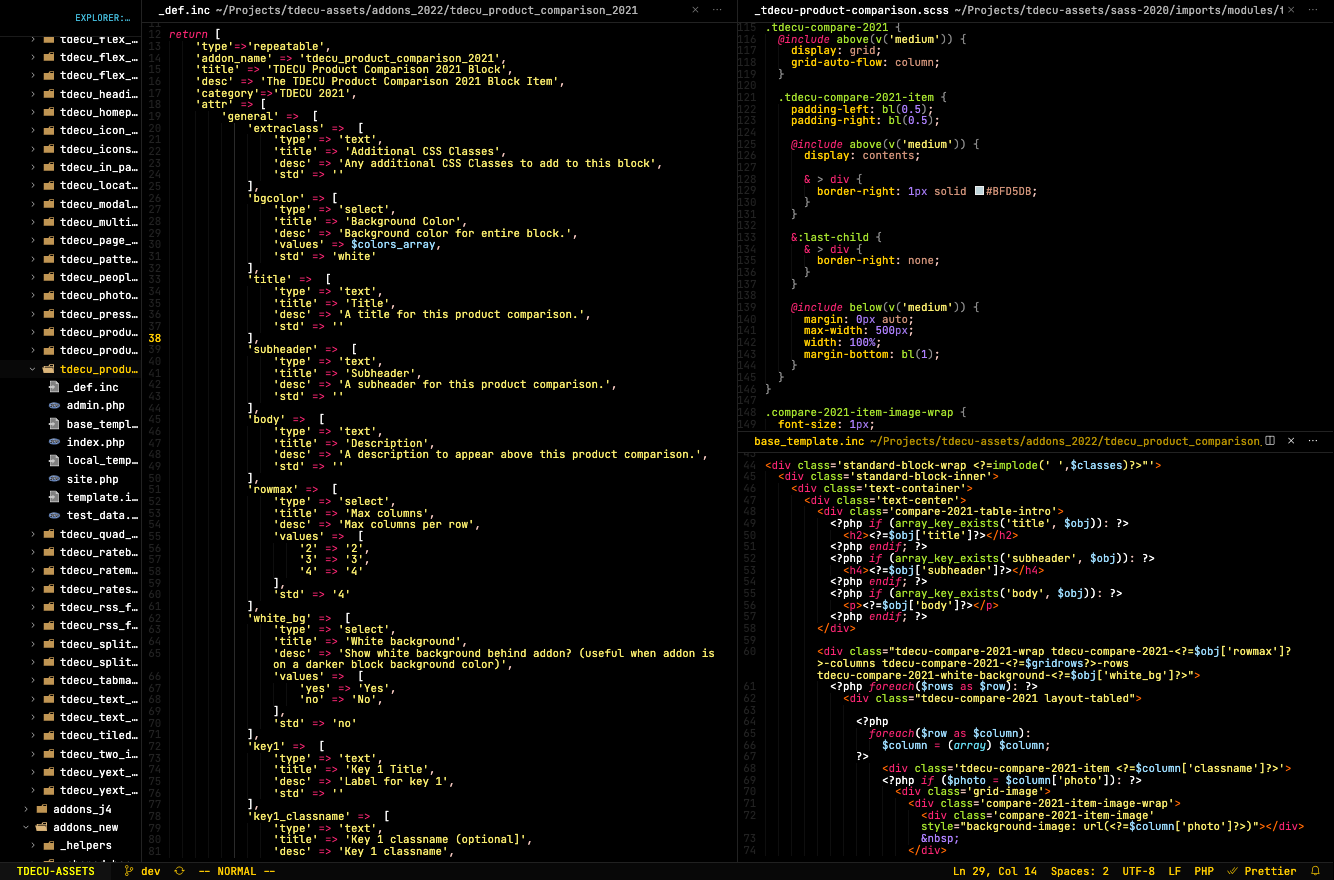TDECU
Primary web presence for Texas-based credit union
Designed and implemented a brand new look and feel for TDECU's entire web presence.
Created a pattern library to document and catalog all front-end components.
Continued to shepherd the site and brand through multiple future redesigns and refactors.
TDECU is the largest credit union in Houston, TX. During my time at EAS, we were asked to execute a full website and content refresh for the main TDECU web presence. I led the initial design and front-end development side of this undertaking, and with assistance from back-end developers and content strategists, we brought TDECU from a lingering, outdated design into a web presence fit for 2022.

Financial institutions like credit unions are generally resistant to change and new ideas, so the TDECU site was far behind the curve when it comes to a modern web experience. The site was not responsive, the information architecture had suffered as new pages were simply tacked on, and the team had little consistency in terms of design. For example, most pages featured a banner image, and these banners were created by individual teams on the TDECU site, leading to disorientation and weak visual consistency as a whole across the site.
To begin, I created a pattern library of all the front-end components we would need to build the new site. I started at a high level with a style guide, outlining the standard colors and typography that would define the TDECU web brand.

I then moved into design and implementation of specific components that we would be using to compose the final site. Modules which were previously a disparate collection of loosely similar pieces - such as the hero banners - became true standardized components, with options exposed via the CMS to control their individual properties.

Once the pattern library was complete, the components were integrated into the CMS, and content strategists worked to author the final pages in the CMS.
Since taking ownership of the TDECU web properties under our wing, the brand and site have been through multiple visual front-end redesigns as well as refactoring of the back-end technologies. Each time we have carefully managed these transitions, identifying regressions and filling in the gaps where needed.